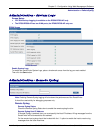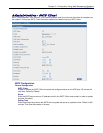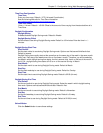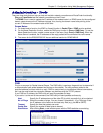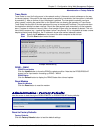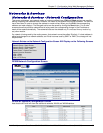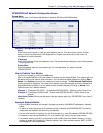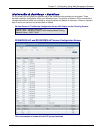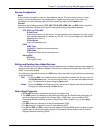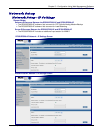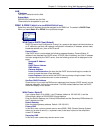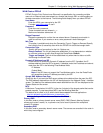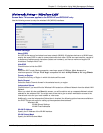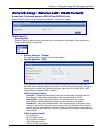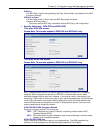
Chapter 5 – Configuration Using Web Management Software
Multi-Tech Systems, Inc. RouteFinder SOHO RF820/RF820-AP & RF830/RF830-AP User Guide (S000399E) 38
Networks & Services > Service Configuration
Service Configuration
Name
Enter the name of network or host you want added to the list. This name has to unique; in other
words, it should not be present in the displayed list. A space cannot be used in the name; it is
considered an invalid character. After you have entered the name, click the Add button.
Protocol
Select from the following protocols: TCP, UDP, TCP & UDP, ICMP, AH, and ESP. When you select
one of the protocols, the fields to the right will change according to the protocol selected.
TCP, UDP, and TCP& UDP
S-Port/Client
Enter the source port for the service. The entry options are a single port (e.g. 80), a list of
port numbers separated by commas (e.g. 25, 80, 110), or a port range (e.g. 1024:64000)
separated by a colon (:).
D-Port/Server
Enter the Destination port.
ICMP
ICMP Type
Choose the Type from the drop down box.
ICMP Code
Choose the Code from the drop down box.
AH and ESP
SPI Value
Enter the SPI value.
Editing and Deleting User-Added Services
There are options for editing or deleting the user added services. However, there are some standard
services which cannot be edited or deleted. If the service is used by the Packet Filter rules, SNAT, or
DNAT, it cannot be deleted.
For editing any user-defined service, the Edit button has to be clicked to get the fields corresponding
to the service entry.
Edit By clicking Edit in the Options column, the information is loaded into the entry menu of
the Edit Service screen. You can then edit the entry. You can edit user-added services
only. The entries can be saved using the Save button.
Delete By clicking Delete in the Options column, the service is deleted from the Services table.
Changes can be saved using the Save button.
Notes About Protocols
• TCP & UDP allow both protocols to be active at the same time.
• The ICMP protocol is necessary to test network connections and RouteFinder functionality, as
well as for diagnostic purposes. In the Packet Filter > ICMP menu you can enable ICMP
Forwarding between networks, as well as RouteFinder ICMP reception (e.g., to allow ping
support).
• The ESP protocol is required for Virtual Private Network (VPN).
• The AH protocol is required for Virtual Private Network (VPN).
• For AH and ESP, the SPI is a whole number between 256 and 65536, which has been mutually
agreed upon by the communication partners. Values below 256 are reserved by the Internet
Assigned Numbers Authority (IANA).



